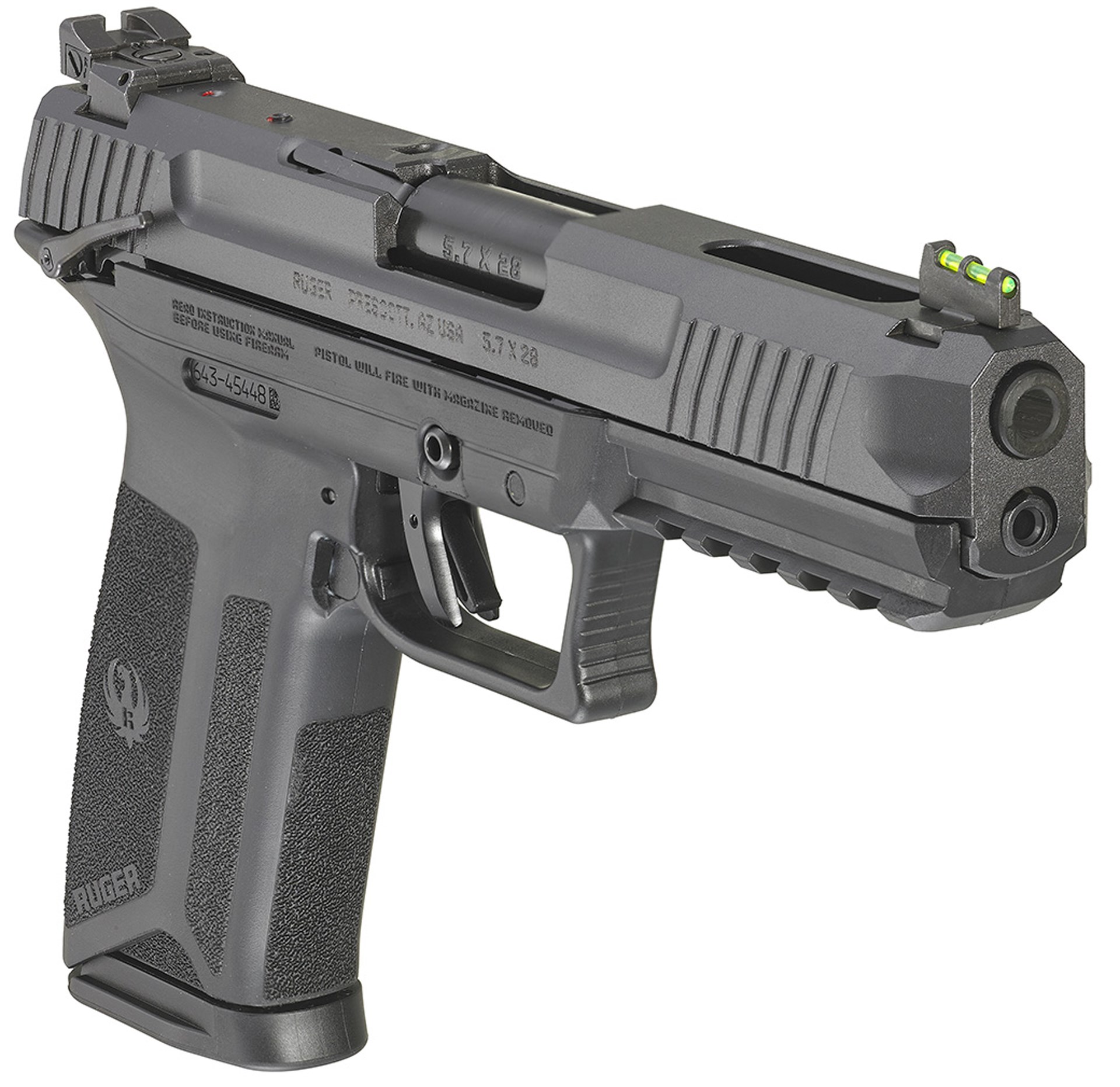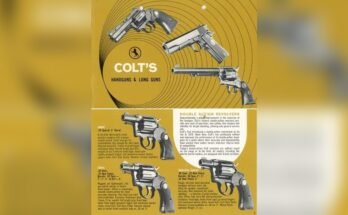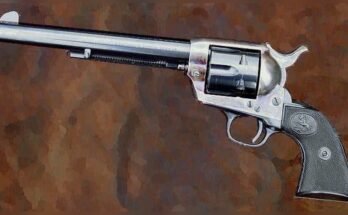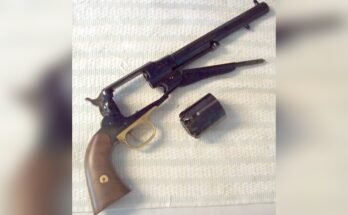If you’ve ever handled a snub-nose revolver, you might have noticed something about its recoil. But how strong is it really?
You’re probably wondering if the short barrel means a harder kick or if it’s manageable for quick, confident shots. Understanding the recoil is key to feeling comfortable and accurate with these compact firearms. Keep reading, because we’re going to break down exactly what you can expect from a snub-nose revolver’s recoil—and how it might affect your shooting experience.
This knowledge could make all the difference the next time you pick one up.

Snub-nose Revolvers Basics
Snub-nose revolvers are popular for their compact size and ease of use. They are small handguns with a short barrel, usually less than 3 inches long. These revolvers are easy to carry and quick to draw, making them a favorite for self-defense. Understanding their basics helps to know how recoil feels when firing.
Design Features
Snub-nose revolvers have a short barrel and a small frame. This design makes them light and easy to hold. The short barrel reduces accuracy over long distances but helps in close-range use. They often have a simple, classic look with a round grip. The small size means they fit well in pockets or small bags. Their design focuses on quick access and easy handling.
Common Calibers
These revolvers come in several calibers. The most common are .38 Special and .357 Magnum. The .38 Special is popular for low recoil and good accuracy. The .357 Magnum offers more power but stronger recoil. Some snub-nose revolvers also use .22 LR or .44 Special calibers. Caliber choice affects recoil strength and shooting experience.

Factors Affecting Recoil
Recoil is the backward force you feel after firing a gun. Several factors affect how strong this recoil feels. Understanding these can help you manage it better when using snub-nose revolvers.
Each part of the gun and the bullet plays a role in recoil. Knowing these details gives you a clearer picture of what to expect.
Barrel Length
Short barrels are common in snub-nose revolvers. A shorter barrel means less weight to absorb recoil. This can make the kick feel sharper and quicker. Longer barrels tend to reduce recoil by adding mass and slowing the bullet.
Weight And Grip
Heavier revolvers absorb more recoil energy. Snub-nose models are often light, so recoil feels stronger. The grip also matters. A firm and comfortable grip helps control recoil better. Thin or slippery grips can increase felt recoil.
Caliber Impact
The size of the bullet affects recoil strength. Larger calibers usually produce more recoil. Snub-nose revolvers come in different calibers, from small to powerful. Higher caliber rounds push back harder, making recoil more noticeable.
Recoil Experience In Snub-nose Revolvers
Snub-nose revolvers are known for their compact size and ease of carry. Their recoil experience often raises questions among shooters. Understanding how recoil feels in these firearms helps users manage their shooting better. The short barrel and light weight affect the recoil noticeably. This section breaks down the recoil experience clearly.
Comparison With Other Firearms
Snub-nose revolvers have stronger recoil than longer-barreled guns. The short barrel means less weight to absorb the kick. Semi-automatic pistols often have less felt recoil. They use recoil springs and slide movement to reduce kick. Rifles and shotguns usually have even milder recoil due to their weight and design. Small snub-nose revolvers chambered in powerful calibers like .357 Magnum can be tough to control. The compact frame makes the recoil sharper and quicker. This is why some shooters prefer heavier or longer guns for comfort.
User Perspectives
Shooters report a sharp, quick recoil with snub-nose revolvers. Beginners may find it surprising or uncomfortable at first. Experienced users learn to control the muzzle rise effectively. Many appreciate the quick recovery between shots despite the strong recoil. Some mention that proper grip and stance reduce felt recoil significantly. Others find smaller calibers easier to manage in snub-nose models. Overall, user feedback highlights the balance between power and portability. The recoil is noticeable but manageable with practice.
Managing Snub-nose Revolver Recoil
Managing the recoil of a snub-nose revolver is important for comfort and accuracy. These guns have a short barrel and light weight. This design causes them to kick back more than larger revolvers. Learning how to handle the recoil helps you shoot better and feel safer.
Recoil can seem strong at first. But with good techniques, it becomes easier to control. Small changes in how you hold and stand can make a big difference. Accessories can also help reduce the kick.
Proper Stance And Grip
Stand with feet shoulder-width apart. Keep knees slightly bent to absorb recoil. Lean your body slightly forward for balance.
Hold the revolver firmly with both hands. Wrap your strong hand around the grip. Place your support hand over the strong hand.
Keep thumbs forward and pointed along the side of the revolver. A steady grip lowers the chance of the gun flipping up. Practice this stance and grip often for better control.
Use Of Recoil Reduction Accessories
Rubber grips can absorb some of the recoil energy. They also improve your hold on the revolver. These grips are easy to install and affordable.
Recoil pads or sleeves fit around the handle. They soften the impact on your hand. Some shooters use weighted grips to balance the gun better.
Try different accessories to see what feels best. These tools help reduce recoil and make shooting more comfortable.
Popular Snub-nose Revolvers And Their Recoil
Snub-nose revolvers are popular for their small size and ease of carry. These guns often have shorter barrels, which affects how they handle recoil. Understanding the recoil of different models helps shooters pick the right revolver for their needs. Below are some common types of snub-nose revolvers and how their recoil feels.
Lightweight Models
Lightweight snub-nose revolvers are easy to carry and quick to draw. They often use materials like aluminum or polymer to reduce weight. These lighter guns tend to have stronger recoil. The gun moves more in your hand because there is less mass to absorb the kick. Shooters may feel sharper but shorter recoil pulses. These models are good for those who want easy carry but can manage more recoil.
Heavy-duty Options
Heavy-duty snub-nose revolvers have more metal, making them heavier. The extra weight helps absorb recoil, making shooting smoother. These guns often use steel frames and can handle stronger cartridges. Recoil feels softer and less harsh compared to lightweight models. Heavy-duty options suit shooters who want less kick and more control. They may be harder to carry but offer better shooting comfort.
Myths About Snub-nose Revolver Recoil
Snub-nose revolvers often get a bad reputation for having strong recoil. Many shooters believe these small guns kick harder than other handguns. This idea comes from the size and shape of the revolver. People think the shorter barrel and lighter weight make the gun harder to control. But are these beliefs true? It’s important to separate facts from myths.
Understanding the real recoil of snub-nose revolvers helps shooters make better choices. Myths can scare new shooters or cause wrong opinions. Let’s explore the common misconceptions and compare them with actual facts.
Common Misconceptions
One common myth says snub-nose revolvers always have strong recoil. People assume the short barrel means more kick. Another belief is that small revolvers are harder to shoot accurately. Some think the recoil is so bad it causes pain or injury. These ideas come from seeing bigger guns with less recoil. The size and weight differences create these false impressions.
Many also think that snub-nose revolvers are only for close range shooting because of recoil. This limits how people use them. The truth is different. Recoil depends on many factors, not just barrel length or gun size.
Facts Versus Fiction
Recoil depends on bullet size, powder load, and gun weight. Snub-nose revolvers do have noticeable recoil. But it is not always stronger than other pistols. The small size can make recoil feel sharper. Still, many shooters manage recoil well with practice and proper grip.
Modern snub-nose revolvers use lighter loads to reduce recoil. Many models come with features that help control the kick. Also, the design spreads recoil energy in a way that feels manageable. The idea that these guns always hurt or kick too hard is false.
Recoil is personal. Some may feel it more than others. Learning to shoot with good technique lowers recoil impact. Snub-nose revolvers can be comfortable and accurate for many shooters.

Frequently Asked Questions
Do Snub-nose Revolvers Have More Recoil Than Others?
Snub-nose revolvers typically have stronger recoil due to their short barrel and light weight. This design reduces the gun’s ability to absorb recoil energy. Shooters often feel more kick compared to longer-barreled revolvers or semi-automatic pistols.
How Does Barrel Length Affect Snub-nose Revolver Recoil?
A shorter barrel means less mass to absorb recoil, increasing felt kick. Snub-nose revolvers usually have barrels under 3 inches, which intensifies recoil. Longer barrels help reduce recoil by providing more weight and stabilizing the firearm during shooting.
Does Caliber Size Impact Snub-nose Revolver Recoil?
Yes, larger calibers produce stronger recoil in snub-nose revolvers. For example, a. 357 Magnum will have more kick than a. 38 Special. Caliber size directly influences the power and recoil force experienced by the shooter.
Can Recoil Management Accessories Help Snub-nose Revolvers?
Recoil pads, grips, and compensators can reduce felt recoil in snub-nose revolvers. These accessories absorb shock and improve control. While they don’t eliminate recoil, they make shooting more comfortable and manageable.
Conclusion
Snub-nose revolvers can have strong recoil due to their short barrels. This recoil may feel sharper than on larger guns. Still, many shooters manage it with practice and proper grip. Smaller size means less weight to absorb the kick. Choosing the right ammunition can also reduce recoil.
Overall, snub-nose revolvers offer power in a compact form. They suit those who want easy carry and quick use. Understanding recoil helps you handle these guns safely and confidently.



